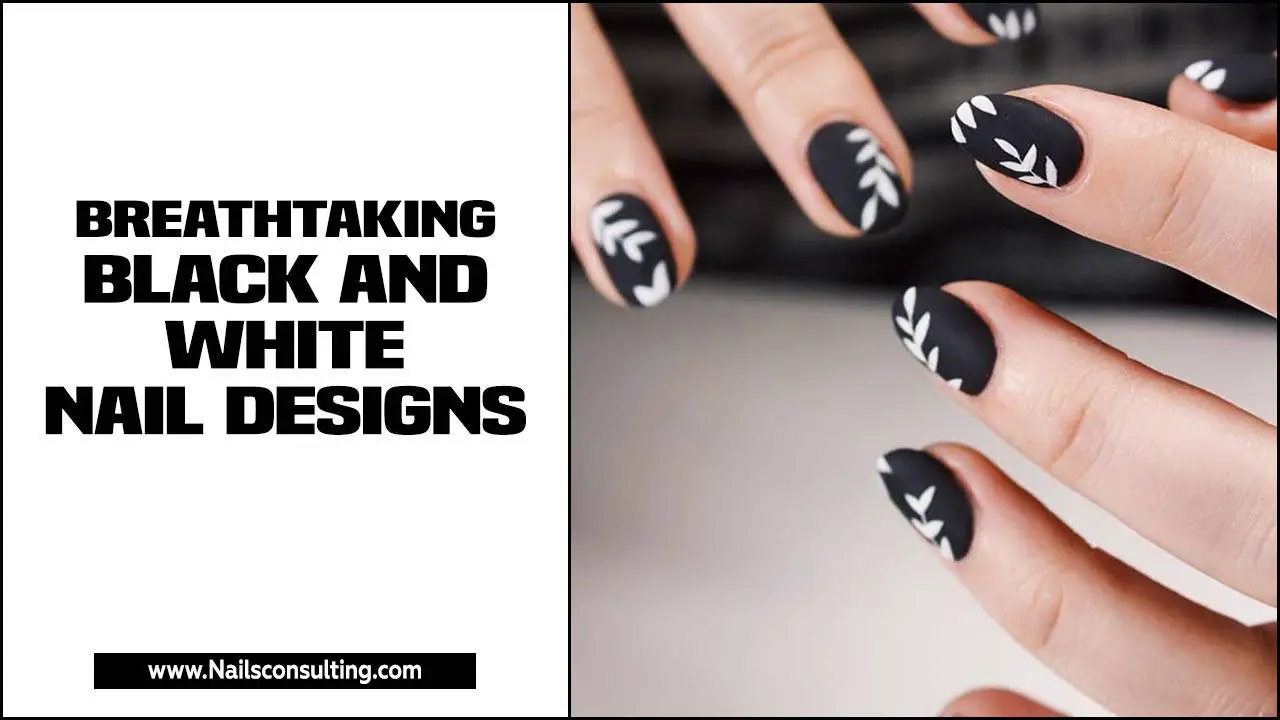Quick Summary:
To care for acrylic nails, keep them dry, gently file sharp edges, avoid harsh chemicals, and moisturize your cuticles. Regular maintenance with a professional will keep them looking fabulous and strong!
So, you’ve got a gorgeous set of acrylic nails and you’re ready to show them off! They’re super strong, can be styled in so many ways, and give you that polished look we all love. But sometimes, acrylics can feel a bit… tricky. You might wonder, “How do I keep these looking amazing?” Don’t worry, it’s totally doable! It’s all about knowing a few simple secrets. We’ll walk through everything you need to know to keep your acrylics in tip-top shape, without any fuss. Get ready to feel confident and creative with your beautiful nails!
Why Acrylic Nail Care Matters
Acrylic nails are a fantastic way to enhance your natural nails, but like any beauty treatment, they require a little TLC to stay looking their best. Without proper care, acrylics can chip, lift, or even damage your natural nails underneath. Plus, a little attention can go a long way in maintaining their beautiful finish and preventing common frustrations, like snagging or breaking.
Think of it like this: your acrylics are a fashion statement, and you want to keep that statement bold and flawless! Understanding simple care techniques will not only extend the life of your manicure but also keep your hands looking neat and elegant day after day. It’s about making sure your investment in beauty lasts and works for you, not against you.
Your Acrylic Nail Care Toolkit
Getting started with acrylic nail care doesn’t require a salon’s worth of equipment. A few key items can help you maintain your nails between professional fills. Having these handy will make upkeep a breeze!
- A Soft Nail Brush: For gently cleaning away dirt and debris.
- Cuticle Oil: Essential for keeping your cuticles hydrated and healthy.
- Emery Board or Fine-Grit Nail File: To smooth out any rough edges or nhẹ nhàng shape minor imperfections. (Look for a grit of 240 or higher for acrylics.)
- Non-Acetone Nail Polish Remover: Ideal for cleaning your nails without drying out the acrylic.
- Gloves: Your best friend for protecting your nails from water and harsh chemicals.
- A Good Moisturizer: For your hands and nails.
Day-to-Day Acrylic Nail Care Tips
Keeping your acrylics looking fresh and strong is easier than you might think. It mostly involves being mindful of how you use your hands and incorporating a few simple habits into your routine.
1. Keep Them Dry!
This is probably the most crucial tip for acrylic nail longevity. Prolonged exposure to water can weaken the bond between the acrylic and your natural nail, leading to lifting or even breakage. When you’re washing dishes, cleaning the house, or even showering, make it a habit to wear rubber gloves.
Think of it as giving your nails a protective shield. This simple step significantly reduces the amount of moisture your acrylics come into contact with, keeping them secure and looking their best for longer. It might seem like a small thing, but it makes a huge difference!
2. Be Gentle with Your Nails
Acrylics are strong, but they aren’t indestructible. Avoid using your nails as tools. That means no prying open cans, scraping off stickers, or using them to pick at things. These actions can cause cracks, chips, or even lift the acrylic from your natural nail.
Instead, use the pads of your fingers or appropriate tools. Being mindful of this will save your nails from accidental damage and keep them looking salon-perfect. Your nails are for decoration and light tasks, not heavy-duty work!
3. Moisturize, Moisturize, Moisturize!
The skin around your nails, known as the cuticle, can become dry and ragged, making your manicure look less polished. Cuticle oil is your secret weapon here! Apply it daily, gently massaging it into your cuticles and the base of your nails.
Why is this so important? Hydrated cuticles mean a smoother, healthier appearance around your acrylics. It also helps prevent hangnails, which can be annoying and potentially damage your acrylics. A good hand lotion is also a great addition to your routine after washing your hands.
4. Avoid Harsh Chemicals
Exposure to strong cleaning products, solvents, and even certain lotions can break down the acrylic material, leading to discoloration, weakening, or lifting. Always wear gloves when using household cleaners, going swimming (chlorine can be harsh!), or working with chemicals.
This protection is vital. Even things like hairspray can contain drying alcohols that can affect your acrylics over time. If you’re unsure about a product, it’s always best to err on the side of caution and use protection. According to the U.S. Environmental Protection Agency, many common household cleaners contain chemicals that can be tough on surfaces, and your nails are no exception!
5. Gentle Cleaning is Key
When you do need to clean under your nails, use a soft nail brush and a mild soap. Avoid using anything sharp or abrasive, as you could scratch the acrylic or damage the natural nail underneath. A gentle approach ensures your nails stay clean without any unintended consequences.
6. File with Care
If an acrylic nail gets a snag or a sharp edge, resist the urge to bite or tear it! This can cause significant damage. Instead, use a fine-grit emery board (240 grit or higher) to gently file down the rough spot. If the nail is badly damaged, it’s best to visit your nail technician.
Always file in one direction to prevent creating micro-fractures in the acrylic. This is a simple technique that will save your nails from further mishap. A gentle buffing can also help smooth out minor surface bumps.
7. Be Mindful of Temperature Changes
Extreme and rapid temperature fluctuations can sometimes affect the adhesion of acrylic nails. While this is less common, it’s still a good idea to be aware. For instance, plunging hot hands into icy water repeatedly might create minor stress.
This doesn’t mean you can’t enjoy a hot bath or a dip in the ocean, but be aware that sudden, drastic temperature shifts can be a factor in nail stress. It’s another reason why keeping your nails from prolonged immersion in water is beneficial.
Maintaining Your Acrylics: Fills and Repairs
Your natural nails grow, and acrylics need to keep up! When your natural nail grows out, a gap appears at the cuticle area, which can make your acrylics look less neat and potentially lead to lifting.
How Often Do You Need Fills?
Most people need to get their acrylics filled every 2 to 3 weeks. This time frame can vary depending on how quickly your natural nails grow and how well you’ve been caring for them.
A fill is essentially a touch-up where your nail technician will:
- Gently buff away the old polish.
- File down the apex of the acrylic to reduce thickness.
- Fill the gap at the cuticle with new acrylic product.
- Reshape and re-polish your nails.
Dealing with Chips and Breaks
Accidents happen! If you chip or break an acrylic nail, try to smooth out any sharp edges with a fine-grit file if possible. However, for significant breaks or lifting, it’s best to contact your nail technician for a repair. Attempting a DIY repair might not always be successful and could potentially cause more damage.
Your nail tech has the right tools and products to fix it seamlessly, ensuring your manicure looks unified and beautiful again.
Common Acrylic Nail Mistakes to Avoid
Even with the best intentions, beginners can sometimes make mistakes that won’t do their acrylics any favors. Knowing these can save you from potential hassle:
| Mistake | Why It’s a Problem | Better Approach |
|---|---|---|
| Using Acetone to Remove Polish | Acetone can dry out and weaken acrylic, making it brittle and prone to damage. | Always use a non-acetone nail polish remover. |
| Picking or Peeling Them Off | This is a big no-no! It will tear off layers of your natural nail, causing significant damage and pain. | If you want them off, go to a professional for safe removal. |
| Skipping Glove Protection | Water and harsh chemicals are the arch-nemesis of acrylics, causing lifting and weakening. | Wear gloves for all household chores and exposure to water. |
| Over-Filing or Aggressive Buffing | Too much filing can thin the acrylic, weaken it, or even damage your natural nail underneath. | Be gentle, file in one direction, and leave the heavy work to your technician. |
| Forgetting Cuticle Care | Dry, neglected cuticles make your whole manicure look unfinished and can lead to hangnails. | Use cuticle oil daily and gently push back cuticles. |
| Trying to “Fix” Breaks with Glues | Cyanoacrylate (super glue) can cause further cracking, weakness, and allergic reactions. It doesn’t bond acrylic properly. | Seek professional repair for any significant breaks or lifting. |
Can You Polish Over Acrylics?
Absolutely! One of the great things about acrylics is their versatility. You can absolutely paint over them with regular nail polish or gel polish. It’s a fantastic way to change up your look without affecting the acrylics themselves.
When you want to remove the polish, remember to use only non-acetone remover. This ensures you’re cleaning the polish off without damaging the acrylic structure. A fresh coat of color can completely transform your acrylics and keep them looking vibrant!
When to See a Professional
While these at-home tips are excellent for maintenance, there are times when professional help is essential. Recognizing these situations ensures you’re protecting your nail health and the integrity of your acrylics.
- Lifting: If you notice any gaps or space between the acrylic and your natural nail, especially at the cuticle or free edge, this is lifting. It can trap moisture and bacteria, so it needs professional attention.
- Significant Breakage: If an acrylic nail breaks deeply or cracks, it’s best to have it repaired by a technician.
- Discoloration: Acrylic can sometimes discolor due to product interactions or prolonged sun exposure. A professional can assess and address this.
- Infection signs: While rare, if you experience any redness, swelling, or pain around your acrylic nails, seek medical advice and have the acrylics removed by a professional. Proper hygiene is key to preventing this. Check out CDC recommendations for hand hygiene to help prevent infections.
- Removal: When you’re ready to remove your acrylics, always go to a nail salon. They have the proper techniques and solutions to safely remove them without damaging your natural nails.
Your nail technician is your best resource for all things acrylic. They can spot potential issues early and provide the best solutions.
FAQs about Acrylic Nail Care
What is the number one rule for acrylic nail care?
The number one rule is to keep your acrylic nails as dry as possible. Prolonged exposure to water can weaken the bond between the acrylic and your natural nail, leading to lifting and damage.
Can I use regular nail polish remover on acrylic nails?
No, it is best to avoid regular nail polish removers that contain acetone. Acetone can dry out and weaken the acrylic, making it brittle. Opt for non-acetone nail polish removers instead.
How often should I get fills for my acrylic nails?
Typically, you should get fills every 2 to 3 weeks. This depends on the growth rate of your natural nails and how well you care for your acrylics. Your nail technician can advise you on the best schedule for your nails.
What should I do if my acrylic nail chips or breaks?
If you notice a chip or a minor snag, gently file it smooth with a fine-grit emery board. For a significant break or if the acrylic is lifting, it’s best to visit your nail technician for a professional repair to prevent further damage.
Is it okay to use my acrylic nails to open things?
Absolutely not! While acrylics are strong, they are not designed to be used as tools. Using them to pry, scrape, or open items can cause them to crack, chip, or lift, potentially damaging your natural nails underneath.
How do I keep my cuticles looking good with acrylics?
Regularly apply cuticle oil to your cuticles and the base of your nails. Gently massage it in to keep the skin hydrated and healthy. This prevents dryness, hangnails, and makes your manicure look more polished.
Can I swim with acrylic nails on?
You can swim with acrylic nails, but it’s advisable to limit prolonged immersion in water. Chlorine in pools and salt in ocean water can be drying and potentially weaken the acrylic over time. Wearing gloves for extensive swimming can help protect them.
Conclusion
Caring for your acrylic nails doesn’t have to be complicated. By following these essential tips – keeping them dry, moisturizing your cuticles, being gentle, and knowing when to seek professional help – you can ensure your gorgeous acrylics stay strong, beautiful, and salon-fresh for longer. You’ve invested in a look you love, and with a little mindful attention, you can enjoy it to the fullest. So go ahead, embrace your fabulous nails with confidence, knowing you’ve got the know-how to keep them looking their absolute best!



